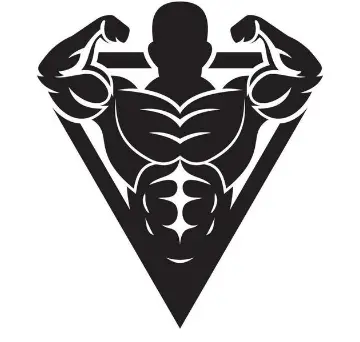Staying properly hydrated is one of the most important aspects of athletic performance. Whether you’re an endurance runner, a weightlifter, or a weekend warrior, understanding how hydration affects your body can help you achieve peak results. This article will explore key hydration strategies for athletes, the science behind water’s role in performance, and how to maintain balance before, during, and after exercise.
Why Hydration is Crucial for Athletic Performance
Hydration plays a vital role in maintaining bodily functions that directly impact performance, including:
- Regulating Body Temperature: Proper hydration helps your body cool down through sweat during exercise.
- Lubricating Joints: Dehydration can lead to stiffness, reducing your range of motion.
- Sustaining Energy Levels: Even mild dehydration (1-2% body weight loss) can significantly impact endurance and strength.
- Improving Mental Focus: Hydration influences cognitive function, which is critical for strategy and quick decision-making in sports.
How Dehydration Impacts Athletic Performance
Dehydration occurs when fluid loss exceeds intake. Athletes lose fluids primarily through sweat, and failing to replace these losses can lead to:
- Fatigue
- Cramps
- Decreased Strength and Endurance
- Slower Recovery Times
Key Insight: A mere 2% decrease in body weight due to dehydration can reduce performance by up to 20%.
Pre-Exercise Hydration Strategies
Proper hydration begins long before your workout or competition.
- Hydrate Ahead of Time
- Aim to drink 16-20 ounces of water 2-3 hours before exercise.
- Consume another 8-10 ounces about 20 minutes before starting.
- Monitor Your Hydration Levels
- Check your urine color: Pale yellow indicates proper hydration, while darker shades suggest dehydration.
- Use a hydration calculator or weigh yourself before and after workouts to estimate fluid loss.
- Avoid Overhydration
- Drinking excessive amounts of water can lead to hyponatremia (low sodium levels), which can be dangerous. Balance water intake with electrolytes.
Hydration During Exercise
During intense physical activity, replenishing fluids is critical to maintaining performance.
- Follow the Sweat Rule
- Athletes generally lose 0.5-2 liters of sweat per hour. Replace fluids by drinking 4-8 ounces every 15-20 minutes during exercise.
- Incorporate Electrolytes
- Sports drinks with sodium, potassium, and magnesium help replace lost electrolytes, prevent cramps, and sustain endurance.
- Opt for low-sugar options to avoid energy crashes.
- Customize Your Plan
- Some athletes require more hydration due to higher sweat rates. Experiment with different strategies during training to find what works best.
Post-Exercise Hydration Strategies
Recovery is just as important as preparation. Proper post-exercise hydration accelerates recovery and prevents fatigue.
- Rehydrate Based on Sweat Loss
- For every pound lost during exercise, drink 16-24 ounces of fluids.
- Include electrolyte-rich drinks or foods (e.g., bananas, coconut water) to replenish sodium and potassium levels.
- Hydrate Within 2 Hours
- The body is most efficient at absorbing fluids immediately after exercise.
- Combine water intake with protein and carbs to aid muscle repair and glycogen replenishment.
Best Hydration Practices for Different Types of Athletes
Endurance Athletes (e.g., runners, cyclists)
- Hydration packs or handheld water bottles are great for long-distance activities.
- Prioritize electrolyte solutions to avoid “hitting the wall.”
Strength Athletes (e.g., weightlifters)
- Sip water between sets to maintain muscle performance.
- Electrolyte supplements can prevent cramping during high-rep or endurance-style lifts.
Team Sport Athletes (e.g., soccer, basketball)
- Take advantage of game breaks to drink water or sports drinks.
- Pre-hydration is especially important for back-to-back games.
Hydration Myths Debunked
- Myth 1: Thirst is the Best Indicator of Hydration
Fact: By the time you feel thirsty, you’re already dehydrated. - Myth 2: Water is Enough for All Workouts
Fact: Long-duration or high-intensity activities often require electrolytes to replace what’s lost in sweat. - Myth 3: Cold Water is Bad for Hydration
Fact: Cold water is absorbed faster and can help cool your body during exercise.
Tools and Apps for Tracking Hydration
- Hydration Calculators: Apps like MyFitnessPal or Hydration Reminder can help you monitor fluid intake.
- Sweat Rate Tests: Weigh yourself pre- and post-exercise to estimate your sweat rate and adjust hydration accordingly.
Hydration Tips for Hot or Cold Weather
- In Hot Weather:
- Increase fluid intake and opt for drinks with electrolytes to combat excessive sweat.
- Wear light, breathable clothing to stay cool.
- In Cold Weather:
- Dehydration risks still exist, as cold air dehydrates through respiration.
- Warm fluids like tea or electrolyte-infused drinks can encourage hydration.
Hydration is Key to Part of Athletic Potential
Mastering hydration for athletic performance involves preparation, monitoring, and recovery. By staying ahead of your hydration needs, you can optimize your energy levels, prevent fatigue, and perform at your best.
Pro Tip: Experiment with your hydration strategy during training—not on competition day—to find what works for your unique needs.
Call-to-Action: Ready to unlock your athletic potential? Share this guide with your fitness community and start prioritizing your hydration strategy today!

